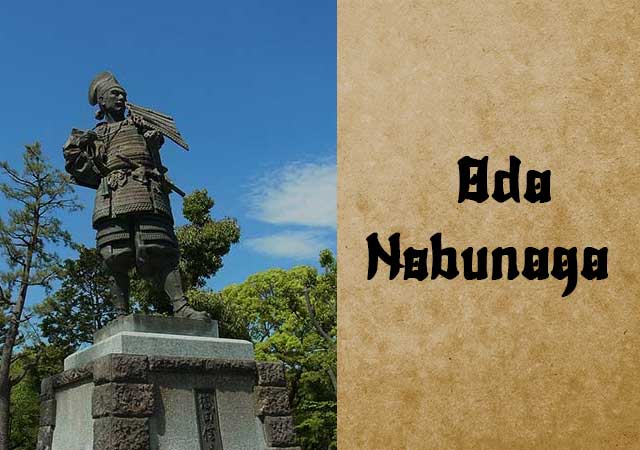
Born on June 23, 1534, in Nagoya, Owari Province, Oda Nobunaga emerged as the successor of Oda Nobuhide, the influential leader of the Oda clan and a deputy military governor, and his wife Dota Gozen. While previously believed to have been born in Nagoya Castle, recent research suggests that Shobata Castle might be his true birthplace. Known by the childhood name Kippōshi, Nobunaga garnered attention in his youth for his unconventional demeanor.
At the age of 8, Nobunaga was entrusted with Nagoya Castle by his father, where he dwelled for 13 years until claiming Kiyosu Castle at 21. Despite having older illegitimate siblings, Nobunaga, as the first legitimate son, was groomed for leadership within the Oda clan. Under the guidance of four chief retainers—Hayashi Hidesada, Hirate Masahide, Aoyama Nobumasa, and Naitō Shōsuke (or Katsusuke)—he underwent specialized education.
In 1546, Nobunaga attained adulthood and adopted the name Oda Saburō Nobunaga. His maiden military campaign ensued in 1547 with an attack on Kira and Ohama in Mikawa. Around 1548 or 1549, Nobuhide brokered peace with Saitō Dōsan of Mino Province through Nobunaga's marriage to Dōsan's daughter, Nōhime, thereby cementing his position within the clan.
In 1551, Nobuhide's sudden demise sparked internal strife within the Oda clan. Despite rightful inheritance, Nobunaga's conduct at the funeral, including tossing ceremonial incense, led to tensions among some Oda members. Mobilizing around 1,000 men, Nobunaga quashed dissent within his family. However, Imagawa Yoshimoto dispatched forces to besiege Anjō Castle, where Nobuhiro, Nobunaga's illegitimate brother and elder sibling, resided.
Amid this turmoil, Nobunaga negotiated Nobuhiro's release through a hostage exchange, forging alliances with other rebellious clans. Despite later facing a plot by Nobuhiro and Saitō Yoshitatsu, Nobunaga extended clemency after the scheme failed.
In early 1552, a defection by Oda's senior retainer, Yamaguchi Noritsugu, to the Imagawa clan resulted in a setback for Nobunaga at the Battle of Akatsuka. Simultaneously, a rebellion led by his uncle, Oda Nobutomo, was repelled.
In 1553, Nobunaga's tutor, Hirate Masahide, committed suicide, purportedly to admonish him. Meanwhile, Shiba Yoshimune alerted Nobunaga to Nobutomo's assassination plot, resulting in Yoshimune's execution. In retaliation, Nobunaga besieged Kiyosu Castle.
The tide turned in 1554 when Nobunaga achieved a pivotal victory against the invading Imagawa clan at the Battle of Muraki Castle. Subsequently, he successfully subdued his uncle, Oda Nobutomo.
In 1556, Saitō Yoshitatsu rebelled against his father, leading to Dōsan's defeat and death at the Battle of Nagara-gawa. Nobunaga intended to assist Dōsan but withdrew upon learning of his demise. As he faced dwindling support from the Saitō clan, Nobunaga emerged triumphant in the Battle of Ino against his brother Nobuyuki.
By 1558, Nobunaga had quelled all opposition within the Oda clan, and by 1559, he had secured his dominance in Owari Province, capturing and dismantling Iwakura Castle.
Ascent to Power
Imagawa Yoshimoto had long been a rival of Oda Nobunaga's father, with ambitions to expand his domain into Owari Province, where the Oda clan held sway. In 1560, Yoshimoto gathered an army of 25,000 soldiers, ostensibly marching towards Kyoto under the pretext of aiding the ailing Ashikaga Shogunate. The Matsudaira clan, allied with Yoshimoto, also lent their support. Quickly, Imagawa forces seized Washizu and Matsudaira Motoyasu captured Marune Fortress from the Oda clan. Faced with a vastly outnumbered force of 2,000 to 3,000 men, some of Nobunaga's advisors advocated seeking refuge at Kiyosu Castle and waiting for an Imagawa siege. However, Nobunaga dismissed this passive strategy, asserting that only a bold offensive could counter the enemy's numerical superiority. He decisively commanded a counteroffensive against Yoshimoto.
In June 1560, Nobunaga's scouts discovered Yoshimoto's army resting at the narrow gorge of Dengaku-Kazama, a vulnerable target for a surprise assault, while the Imagawa forces were celebrating their recent victories. While Yoshimoto anticipated triumph, Nobunaga's troops advanced to the fortified Atsuta Shrine, overlooking the Imagawa camp. Subsequently, Nobunaga shifted to Zensho-ji fort, deploying a decoy army there, before swiftly maneuvering behind Yoshimoto's camp and launching a surprise attack after a fierce thunderstorm. Yoshimoto fell in battle to two Oda samurai. This victory significantly enhanced Nobunaga's prestige, prompting numerous samurai and warlords to pledge their allegiance to him.
It is believed that Kinoshita Tōkichirō, later known as Toyotomi Hideyoshi, participated in this battle, although historical records from that period are scarce. His contributions were first documented during the Mino Campaign.
Following this pivotal battle, the influence of the Imagawa clan rapidly declined, leading to the loss of control over the Matsudaira clan. In 1561, a surprising alliance emerged between Oda Nobunaga and Matsudaira Motoyasu, who would later be renowned as Tokugawa Ieyasu, despite their enduring rivalry. Additionally, Nobunaga solidified an alliance with Takeda Shingen by arranging the marriage of his daughter to Shingen's son.
In 1561, after the sudden death of Saitō Yoshitatsu, Nobunaga's brother-in-law, his son Tatsuoki assumed leadership of the Saitō clan. Yoshitatsu had risen to power by eliminating his father and siblings, actions for which Nobunaga sought retribution on multiple occasions. However, Tatsuoki lacked the leadership and strategic acumen of his predecessors. Seizing the opportunity, Nobunaga moved to Komaki Castle and launched his campaign in Mino Province. In June of the same year, he achieved victories in both the Battle of Moribe and the Battle of Jushijo against Tatsuoki.
By convincing Saitō retainers to forsake their incapable leader, Nobunaga dealt a severe blow to the Saitō clan. In 1564, he assigned his faithful retainer Kinoshita Tōkichirō the mission of bribing numerous warlords in the Mino region to garner backing for the Oda clan. In 1566, Nobunaga tasked Kinoshita with constructing Sunomata Castle on the Sai River's bank opposite Saitō territory, serving as a staging ground for Oda forces and intimidating the enemy.
In 1567, the Mino Triumvirate—Inaba Ittetsu, Andō Michitari, and Ujiie Bokuzen—commanding three samurai generals under the Saitō clan, switched sides and allied with Oda Nobunaga. Their combined forces launched a successful final assault during the Siege of Inabayama Castle. Following the castle's capture, Nobunaga renamed it Gifu, drawing inspiration from China's legendary Mount Qi, where the Zhou dynasty originated. He articulated his ambition to unify Japan and adopted a new personal seal reading "Tenka Fubu," signifying his intent to conquer through military prowess. Today, remnants of Nobunaga's residence in Gifu can be found in Gifu Park.
Following Nobunaga's successful conquest of Mino Province in 1567, he tasked Takigawa Kazumasu with leading campaigns that included two invasions of Ise Province in 1567 and 1568, resulting in the defeat of several Ise families who were nominally under the Kitabatake clan. In 1569, the head of the Kitabatake clan, Kitabatake Tomonori, adopted Nobunaga's second son, Oda Nobukatsu.
To solidify an alliance with rival warlord Azai Nagamasa from Omi Province, Nobunaga arranged for his sister Oichi to marry Nagamasa. This strategic move aimed to maintain peaceful relations with the strategically positioned Azai clan, bridging the gap between the Oda clan's territory and Kyoto, the capital.
In 1568, Ashikaga Yoshiaki and his bodyguard Akechi Mitsuhide approached Nobunaga in Gifu, urging him to launch a campaign toward Kyoto. Yoshiaki, brother of the slain 13th shogun Yoshiteru, sought revenge against the Miyoshi clan, who had installed a puppet shogun, Ashikaga Yoshihide. Nobunaga agreed to support Yoshiaki as the new shogun and commenced his campaign to enter Kyoto. Facing resistance from the Rokkaku clan in southern Ōmi Province, Nobunaga swiftly overcame their stronghold at Chōkō-ji Castle, paving the way for his march to Kyoto. Upon entering Kyoto on November 9, 1568, Nobunaga expelled the Miyoshi clan, who had backed the 14th shogun, and installed Yoshiaki as the 15th shogun of the Ashikaga Shogunate. Despite his respect for Emperor Ōgimachi, Nobunaga declined any official title from Yoshiaki.
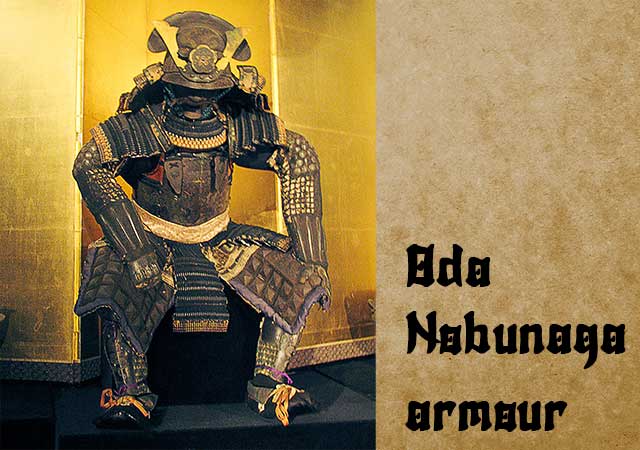
The Unification of Japan under Nobunaga's Leadership
After the appointment of Yoshiaki as shogun, Nobunaga urged him to host a banquet inviting all local daimyō to Kyoto. Asakura Yoshikage, leader of the Asakura clan and acting regent for Ashikaga Yoshiaki, disregarded this call, a move Nobunaga viewed as a betrayal of both the shogun and the emperor. Using this pretext, Nobunaga gathered an army and marched into Echizen. In early 1570, he launched a campaign into the Asakura clan's territory and laid siege to Kanagasaki Castle. This strained Nobunaga's relationship with shogun Ashikaga Yoshiaki, prompting Yoshiaki to secretly form an "anti-Nobunaga alliance," conspiring with other daimyō to overthrow Nobunaga.
Azai Nagamasa, married to Nobunaga's sister Oichi, severed ties with the Oda clan to uphold the longstanding Azai-Asakura alliance. With support from the Rokkaku clan, Miyoshi clan, and the Ikkō-ikki, the anti-Nobunaga coalition inflicted heavy losses on the Oda clan. Faced with the combined forces of the Asakura and Azai clans, Nobunaga strategically withdrew from Kanagasaki in anticipation of defeat.
Asakura Yoshikage, leader of the Asakura clan and acting regent for Ashikaga Yoshiaki, disregarded this call, a move Nobunaga viewed as a betrayal of both the shogun and the emperor. The opposing forces clashed at the Anegawa River on July 30, 1570, with Nobunaga and Tokugawa Ieyasu leading the charge against the Azai and Asakura. Following a fierce battle fought in the shallow river, the Oda and Tokugawa forces emerged victorious.
In 1573, Nobunaga led a campaign with 30,000 troops, primarily from Owari, Mino, and Ise Provinces, besieging Hikida Castle, Ichijōdani Castle, and Odani Castle. He effectively dismantled the Azai and Asakura clans, driving them to suicide.
Ashikaga Yoshiaki, along with his allies, initiated a siege against Nobunaga in 1572. Although the siege initially succeeded in trapping the Oda armies, it halted abruptly due to the sudden death of Takeda Shingen. In retaliation, Yoshiaki instigated a revolt in Kyoto in 1573, provoking Nobunaga to invade Kyoto and force Yoshiaki into retreat.
Nobunaga encountered significant resistance from the Ikkō-ikki, a militant group opposed to samurai rule. In August 1570, he initiated the Ishiyama Hongan-ji War against the Ikkō-ikki, all the while facing off against other samurai adversaries. Although his initial siege of Nagashima failed, Nobunaga persisted, leading to a second siege that inflicted heavy losses on the Ikkō-ikki.
In 1574, Nobunaga launched a third siege of Nagashima, ultimately capturing the fortress and defeating the Ikkō-ikki. The capture of Ishiyama Hongan-ji in 1580 dealt a significant blow to the Ikkō-ikki, diminishing their military strength.
Takeda Shingen, once an Oda ally, turned against Nobunaga, leading to conflict between their clans. Tokugawa Ieyasu's strategic maneuvers and Takeda Shingen's death in 1573 were instrumental in weakening the Takeda forces.
In 1575, Takeda Katsuyori, the son of Takeda Shingen, launched an assault on Tokugawa territory, targeting Yoshida Castle before laying siege to Nagashino Castle. However, Katsuyori's plan failed, and he sought aid from Nobunaga, who personally led a force of approximately 30,000 soldiers to relieve Nagashino Castle. At the Battle of Nagashino, a combined army of 38,000 under Oda Nobunaga and Tokugawa Ieyasu defeated and severely weakened the Takeda clan, marking a pivotal moment in their history.
The Battle of Nagashino has traditionally been remembered as a significant defeat for the Takeda, largely attributed to Takeda Katsuyori's ill-fated decision to order a reckless cavalry charge into a fortified line of arquebusiers. While Nobunaga's employment of a groundbreaking tactic known as the "three-stage shooting" was once believed to be the primary factor in his victory, later research highlighted logistical superiority as the key to his success.
The downfall of the Takeda clan reached its climax in 1582 when forces led by Oda Nobutada and Tokugawa Ieyasu conquered Shinano and Kai provinces. Takeda Katsuyori met his demise at the Battle of Tenmokuzan before taking his own life.
Following Takeda Shingen's death in May 1573, Nobunaga's influence in Kyoto underwent a transformation. By focusing on Ashikaga Yoshiaki, who repeatedly declared hostility towards him, Nobunaga managed to defeat Yoshiaki's forces, effectively dismantling the power of the Ashikaga shogunate. This event signaled the conclusion of the Ashikaga era, as Nobunaga ousted Yoshiaki from Kyoto, resulting in his exile and subsequent life as a Buddhist monk.
With the decline of the Ashikaga shogunate, the authority of Emperor Ōgimachi's Imperial Court also diminished. Nobunaga's entry into Kyoto signaled a reversal of this trend, demonstrating the Emperor's alliance with the Oda clan.
In early 1574, Nobunaga received promotions within the Imperial Court, attaining titles such as Sangi (Court Advisor), Udaijin (Minister of the Right), and Gondainagon (Major Counselor), possibly as a gesture of appeasement.
The conflict between the Oda and Uesugi factions was sparked by the Uesugi's interference in the Hatakeyama clan's territory in Noto Province. Nobunaga dispatched an army, leading to the Battle of Tedorigawa in 1577, where his forces suffered a defeat against Uesugi Kenshin.
Azuchi Castle, completed between 1576 and 1579, symbolized Nobunaga's dominance. Located near Kyoto, it served as a strategic stronghold overseeing approaches to the capital and communication routes to his adversaries.
By 1580, Nobunaga had consolidated control over 20 provinces in central Japan, establishing himself as the most influential lord in the country.
The Tenshō Iga War, consisting of two invasions of Iga province by the Oda clan, ended in 1581 with Nobunaga's conquest of the region. Following an unsuccessful attempt by his son in 1579, Nobunaga toured the province and entrusted its governance to his heir.
Death Oda Nobunaga
By 1582, Nobunaga had reached the zenith of his power, solidifying his status as the preeminent warlord and de facto ruler of Japan. In a decisive triumph, Oda Nobunaga and Tokugawa Ieyasu routed the Takeda clan at the Battle of Tenmokuzan, annihilating their forces and forcing Takeda Katsuyori to flee before ultimately taking his own life, along with his wife, while pursued by Oda's troops. At this critical juncture, Nobunaga stood poised to launch invasions into Echigo Province and Shikoku, marking the apex of his ambitions.
Simultaneously, Nobunaga's former attendant, Hashiba Hideyoshi, launched an assault on Bitchū Province, besieging Takamatsu Castle, a vital stronghold for the Mori clan. Upon the arrival of reinforcements led by Mōri Terumoto, Hideyoshi sought aid from Nobunaga, who promptly ordered his top generals, including Akechi Mitsuhide, to prepare their forces for the impending campaign, under Nobunaga's overall command.
Departing from Azuchi Castle for Honnō-ji, a temple in Kyoto where he frequently conducted tea ceremonies, Nobunaga's retinue was notably diminished, comprising only 30 attendants, while his son Oda Nobutada arrived with 2,000 cavalrymen.
Meanwhile, stationed in Tanba province, Akechi Mitsuhide ostensibly led his army toward Kyoto, ostensibly following Nobunaga's directives. However, upon crossing Katsura River, Mitsuhide abruptly turned against Nobunaga, assassinating him for reasons that remain contentious.
On June 21, 1582, before dawn, Akechi's forces encircled Honnō-ji temple, where Nobunaga was residing, launching a surprise assault. Concurrently, another unit targeted Myōkaku-ji in a synchronized coup. Despite a valiant effort to repel the attack, Nobunaga and his retinue were overwhelmed. Nobunaga briefly fought back before eventually retreating. After ensuring the safety of the court ladies, he performed seppuku in one of the inner chambers.
Following the seizure of Honnō-ji, Mitsuhide also targeted Nobunaga's heir, Nobutada, who likewise met a tragic end through suicide. Despite Mitsuhide's endeavors to locate Nobunaga's body, it remained elusive, casting doubt on his demise and impeding his efforts to legitimize his rebellion.
Upon receiving news of Nobunaga's death, Toyotomi Hideyoshi intercepted Mitsuhide's messenger attempting to inform the Mōri clan of Nobunaga's demise and secure an alliance. Hideyoshi successfully negotiated with the Mōri by leveraging his military strength and demanding concessions, thus averting a confrontation. He promptly returned to Kyoto with his forces in a swift march known as Chūgoku Ōgaeshi.
Mitsuhide's position deteriorated after Nobunaga's death, culminating in his defeat by Oda forces under Hideyoshi at the Battle of Yamazaki in July 1582. Mitsuhide succumbed as a casualty of Ochimusha-gari during the battle, bringing an end to his rebellion.
Thereafter, Hideyoshi continued and realized Nobunaga's vision of unifying Japan within the ensuing decade.
See also
-
Yamagata Masakage
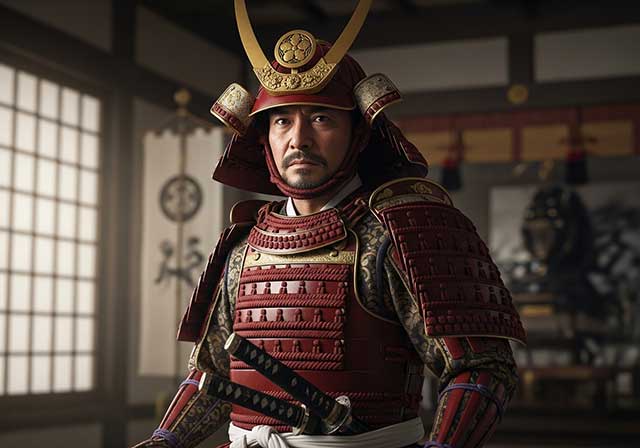
Masakage was one of Takeda Shingen’s most loyal and capable commanders. He was included in the famous list of the “Twenty-Four Generals of Takeda Shingen” and also belonged to the inner circle of four especially trusted warlords known as the Shitennō.
-
Yagyu Munenori
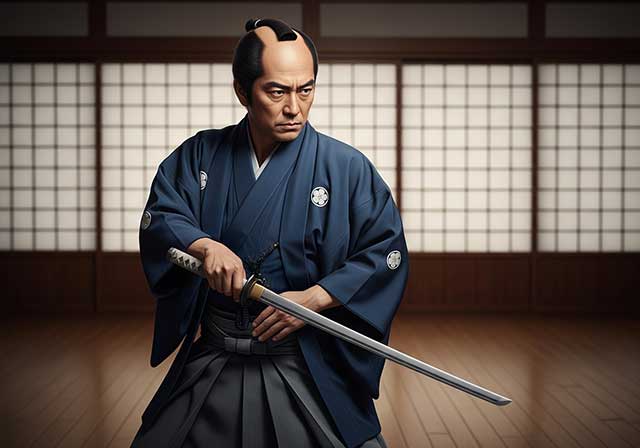
Yagyū Munenori began his service under Tokugawa Ieyasu while his father, Yagyū Muneyoshi, was still at his side. In 1600, Munenori took part in the decisive Battle of Sekigahara. As early as 1601, he was appointed a kenjutsu instructor to Tokugawa Hidetada, Ieyasu’s son, who later became the second shogun of the Tokugawa clan.
-
Yagyu Muneyoshi
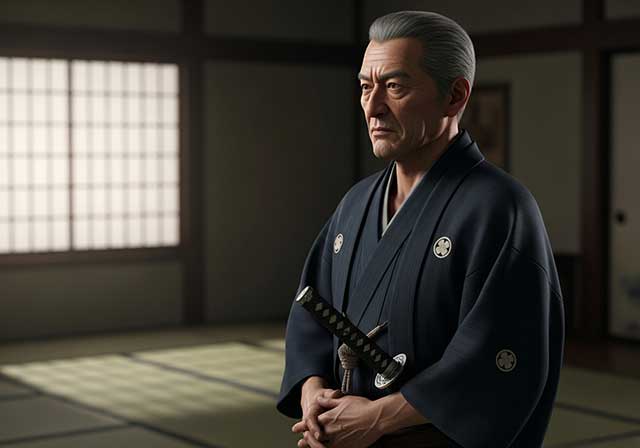
A samurai from Yamato Province, he was born into a family that had been defeated in its struggle against the Tsutsui clan. Muneyoshi first took part in battle at the age of sixteen. Due to circumstances beyond his control, he was forced to enter the service of the Tsutsui house and later served Miyoshi Tōkei. He subsequently came under the command of Matsunaga Hisahide and in time became a vassal first of Oda and later of Toyotomi.
-
Endo Naozune
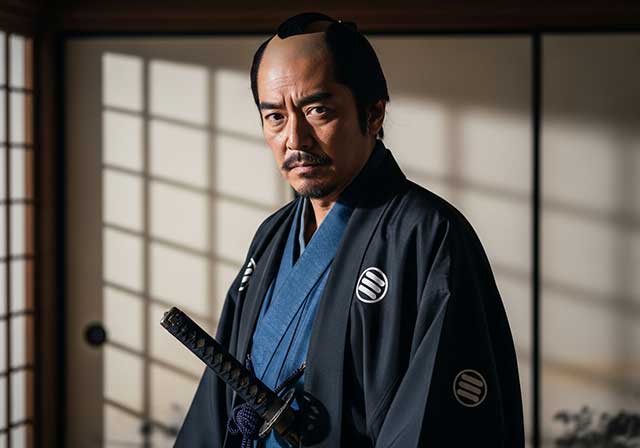
Naozune served under Azai Nagamasa and was one of the clan’s leading vassals, renowned for his bravery and determination. He accompanied Nagamasa during his first meeting with Oda Nobunaga and at that time asked for permission to kill Nobunaga, fearing him as an extremely dangerous man; however, Nagamasa did not grant this request.
-
Hosokawa Sumimoto
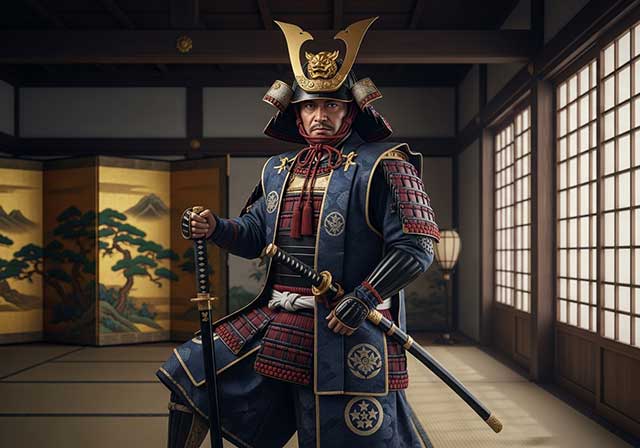
Sumimoto came from the Hosokawa clan: he was the biological son of Hosokawa Yoshiharu and at the same time the adopted son of Hosokawa Masamoto, the heir of Hosokawa Katsumoto, one of the principal instigators of the Ōnin War. Masamoto was homosexual, never married, and had no children of his own. At first he adopted Sumiyuki, a scion of the aristocratic Kujō family, but this choice provoked dissatisfaction and sharp criticism from the senior vassals of the Hosokawa house. As a result, Masamoto changed his decision and proclaimed Sumimoto as his heir, a representative of a collateral branch of the Hosokawa clan that had long been based in Awa Province on the island of Shikoku. Almost immediately after this, the boy became entangled in a complex and bitter web of political intrigue.
-
Honda Masanobu
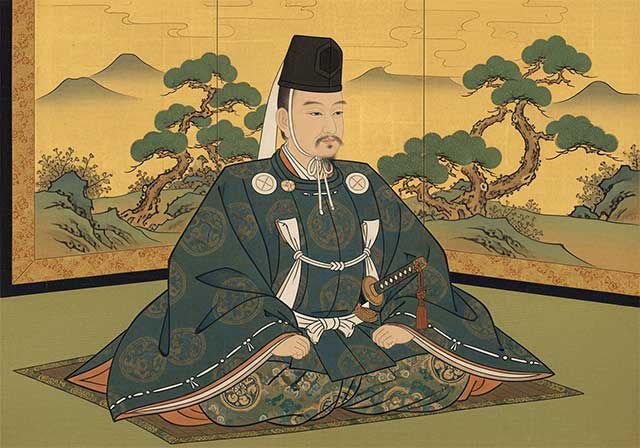
Masanobu initially belonged to the retinue of Tokugawa Ieyasu, but later entered the service of Sakai Shōgen, a daimyo and priest from Ueno. This shift automatically made him an enemy of Ieyasu, who was engaged in conflict with the Ikkō-ikki movement in Mikawa Province. After the Ikkō-ikki were defeated in 1564, Masanobu was forced to flee, but in time he returned and once again entered Ieyasu’s service. He did not gain fame as a military commander due to a wound sustained in his youth; nevertheless, over the following fifty years he consistently remained loyal to Ieyasu.
-
Honda Masazumi
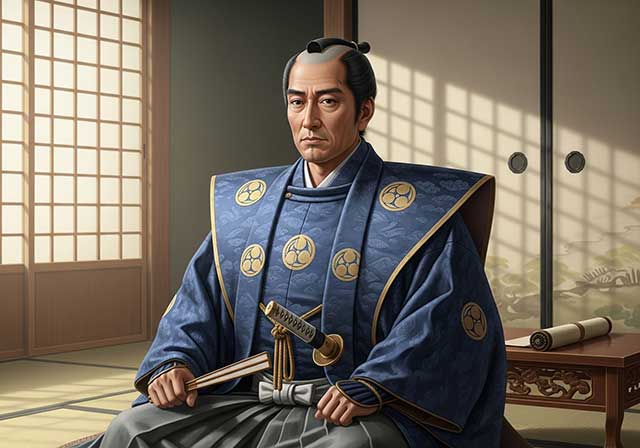
Masazumi was the eldest son of Honda Masanobu. From a young age, he served Tokugawa Ieyasu alongside his father, taking part in the affairs of the Tokugawa house and gradually gaining experience in both military and administrative matters. At the decisive Battle of Sekigahara in 1600, Masazumi was part of the core Tokugawa forces, a clear sign of the high level of trust Ieyasu placed in him. After the campaign ended, he was given a highly sensitive assignment—serving in the guard of the defeated Ishida Mitsunari, one of Tokugawa’s principal enemies—an obligation that required exceptional reliability and caution.
-
Hojo Shigetoki
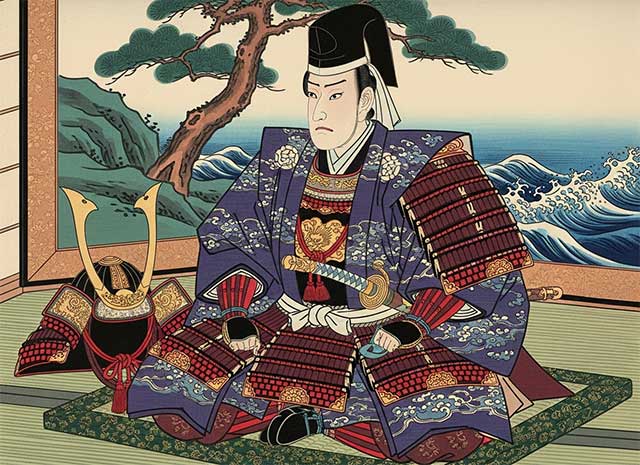
Hōjō Shigetoki, the third son of Hōjō Yoshitoki, was still very young—only five years old—when his grandfather Tokimasa became the first member of the Hōjō clan to assume the position of shogunal regent.

